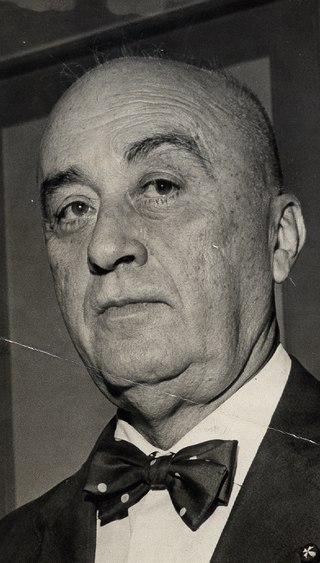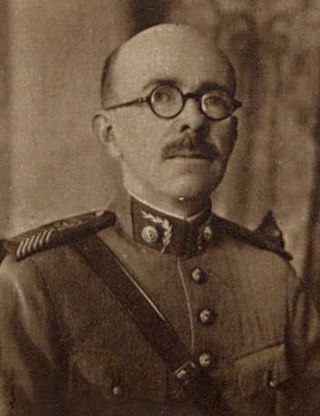
M.M.D.C. it is the initialism by which the names of the martyrs of Brazil's "Constitutionalist Movement" of 1932, which culminated in the uprising called the Constitutionalist Revolution, which broke out on July 9 of that year, were represented.

M.M.D.C. it is the initialism by which the names of the martyrs of Brazil's "Constitutionalist Movement" of 1932, which culminated in the uprising called the Constitutionalist Revolution, which broke out on July 9 of that year, were represented.
The initials represent the names of the São Paulo demonstrators Martins, Miragaia, Dráusio and Camargo, killed by federal troops linked to the Partido Popular Paulista (PPP), a political-military group supporting the Getúlio Vargas regime, in a demonstration that took place on the night of 23 May 1932, an event that preceded and was one of the reasons for the great conflict that year. The acronym also represented the clandestine organization that conspired for the uprising and later coordinated the war efforts, in recruitment, fundraising and resources, as well as the distribution of these to the soldiers of the Constitutionalist Army. [1] [2]

In 1932, Brazil experienced a period in which the Vargas regime governed without a constitution that formally delineated the powers of the President or that made clear the separation of powers between the National Congress, the Legislature, and municipal councils. In reaction, the Paulistas began to move against the Vargas dictatorship, and students prepared a series of demonstrations, which broke out across the capital in a climate of growing revolt on 23 May of that year. [3]
The Revolutionary League, an organization favorable to the regime of Getúlio Vargas was located near the Republic Square. A group of students tried to invade the pro-government League, which resisted with force resulting in the death of four students, Martins, Miragaia, Camargo and Dráusio died - three of them during the confrontation, and the fourth shortly afterward. A fifth student, Orlando Alvarenga de Oliveira, was injured during the fight did not have his name immediately associated with the movement since he died three months later on 12 August, 1932. [2] [4]
Following the episode of Republic Square, an intense campaign of voluntary enlistment throughout the state commenced on July 9, 1932, culminating in the 1932 Constitutionalist Revolution. The initials of Martins, Miragaia, Camargo and Dráusio, M.M.D.C, were used to represent a secret civil organisation which, among other activities, offered military training to the Paulista guerrillas. [2]
Some historians use the initialism "M.M.D.C.A." in honor of Orlando de Oliveira Alvarenga, who died of his wounds three months after the clash in August 1932. To honor him, the state government created the "Colar Cruz de Alvarenga e dos Heróis Anônimos" ("Necklace Cross of Alvarenga and Anonymous Heroes"). On January 13, 2004, State Law 11.658 was enacted, styling May 23 as "Dia dos Heróis MMDCA" ("MMDCA Heroes Day"). [5]
Streets named Martins, Miragaia, Dráusio, Camargo, Alvarenga and MMDC intersect in the neighborhood of Butantã. Escola M.M.D.C. is a school located in the São Paulo neighborhood of Mooca. Streets honoring Martins, Miragaia, Dráusio, and Camargo exist in the cities of Campinas, Cotia, Franca, Itaquaquecetuba, Leme, Lorena, Piracicaba, São Bernardo do Campo, Pauliceia (in a neighborhood where an obelisk with the initials MMDC is also located), São José dos Campos, São José do Rio Preto, Sorocaba and Votorantim, as well as plazas in the cities of Bauru, Jundiaí, Lorraine and São Carlos. [6]
In 1962, in commemoration of the 30th anniversary of the Constitutionalist Revolution, the distinction known as the "M.M.D.C. Medal" was created. by the "Veterans Society of 32 - MMDC" [7] and made official by the state government by decree 40,087/1962. [8]

Plínio Salgado was a Brazilian politician, writer, journalist, and theologian. He founded and led Brazilian Integralist Action, a political party inspired by the fascist regime of Benito Mussolini.

São Paulo is one of the 26 states of the Federative Republic of Brazil and is named after Saint Paul of Tarsus. A major industrial complex, the state has 21.9% of the Brazilian population and is responsible for 33.9% of Brazil's GDP. São Paulo also has the second-highest Human Development Index (HDI) and GDP per capita, the fourth-lowest infant mortality rate, the third-highest life expectancy, and the third-lowest rate of illiteracy among the federative units of Brazil. São Paulo alone is wealthier than Argentina, Uruguay, Paraguay, and Bolivia combined. São Paulo is also the world's twenty-eighth-most populous sub-national entity and the most populous sub-national entity in the Americas.

Cachoeira Paulista is a municipality in the state of São Paulo in Brazil. It is part of the Metropolitan Region of Vale do Paraíba e Litoral Norte, in the Guaratinguetá Microregion.
O Estado de S. Paulo, also known as Estadão, is a daily newspaper published in São Paulo, Brazil. It is the third largest newspaper in Brazil, and its format changed from broadsheet to berliner on October 17, 2021.

Caipiras are a traditional people from the Centre-South of Brazil, the term "caipira" probably originating from Tupi language, originally means "bush cutter", having been identified as a printed symbol for the first time in 1872. The first Caipiras were the bandeirantes, who received this denomination through the Guaianá people who inhabited the region of the Médio Tietê, in São Paulo.

Orígenes Lessa, journalist, short story writer, novelist, and a writer of essays. He was elected, on July 9, 1981 for the Chair number 10 of the Brazilian Academy of Letters, succeeding Osvaldo Orico, and was received on November 20, 1981, by the Academy Member Francisco de Assis Barbosa.

The Constitutionalist Revolution of 1932 is the name given to the uprising of the population of the Brazilian state of São Paulo against the Brazilian Revolution of 1930 when Getúlio Vargas assumed the nation's presidency; Vargas was supported by the people, the military and the political elites of Minas Gerais, Rio Grande do Sul and Paraíba. The movement grew out of local resentment from the fact that Vargas ruled by decree, unbound by a Constitution, in a provisional government. The 1930 Revolution also affected São Paulo by eroding the autonomy that states enjoyed during the term of the 1891 Constitution and preventing the inauguration of the governor of São Paulo, Júlio Prestes, who had been elected president of Brazil in 1930, while simultaneously overthrowing President Washington Luís, who was governor of São Paulo from 1920 to 1924. These events marked the end of the First Brazilian Republic.

The Paulista Republican Party, sometimes translated as the Republican Party of São Paulo, was a Brazilian political party founded on April 18, 1873 during the Itu Convention and sparked the first modern republican movement in Brazil.

Gustavo Adolfo Luiz Dodt da Cunha Barroso was a Brazilian lawyer, writer and politician associated with Brazilian Integralism and antisemitism. He was also known by the pseudonym João do Norte. Being considered a master of Brazilian folklore, he was the first director of the National Historical Museum and one of the leaders of the Brazilian Integralist Action, being one of its most prominent ideologists.
Saul Alves Martins was a Brazilian anthropologist and folklorist, professor of Federal University of Minas Gerais (UFMG). Formed in Social Sciences, master and doctor in the area and for years devoted himself to the study and teaching of anthropology, with an emphasis on folklore and the tradition of Minas Gerais.

Events in the year 1929 in Brazil.

Events in the year 1932 in Brazil.

The Tancredo Neves Pantheon of the Fatherland and Freedom is a cenotaph in the Brazilian capital Brasília, dedicated to the honour of national heroes. It was conceived during the national shock following the death in 1985 of Tancredo Neves, the first elected civilian president after twenty years of military rule.

The flag of the state of São Paulo, Brazil, serves as one of the state's symbols, along with the state's coat of arms and anthem. It was designed by the philologist and writer Júlio Ribeiro in 1888, with his brother-in-law, Amador Amaral, a graphic artist. The flag has thirteen black and white stripes and a red rectangle in the upper left corner holding a white circle enclosing an outline map of Brazil in blue. There is a yellow star in each corner of the red rectangle.
Rodolpho Theodor Wilhelm Gaspar von Ihering was a Brazilian zoologist and biologist, who is considered to be one of the founders of Pisciculture in Brazil.

Isidoro Dias Lopes (30 June 1865 – 27 May 1949) was a brigadier general of the Brazilian army, often styled the "Marshal of the Revolution of 1924".
Nuta Bartlett James, also known as Benevenuta Monteiro James, was a Brazilian revolutionary and feminist.

Bertoldo Ritter Klinger was a Brazilian divisional general in the Brazilian Army and commander in the Constitutionalist Revolution of 1932.

Júlio Marcondes César Salgado was a Brazilian general and commander of the São Paulo State Public Force, currently the Military Police of the State of São Paulo, during the Constitutionalist Revolution.